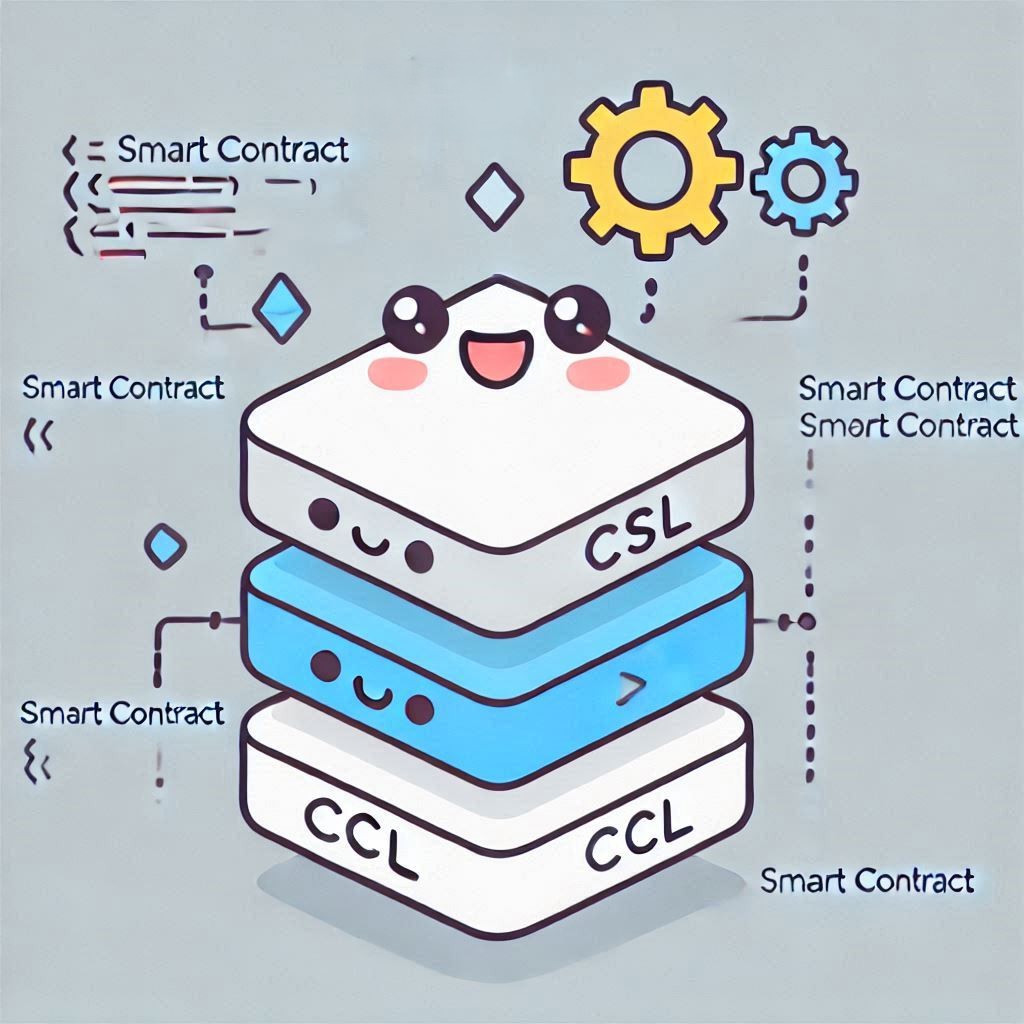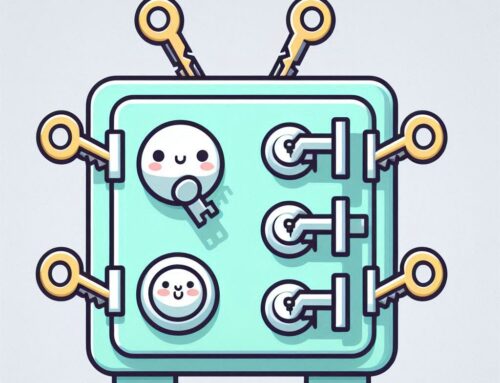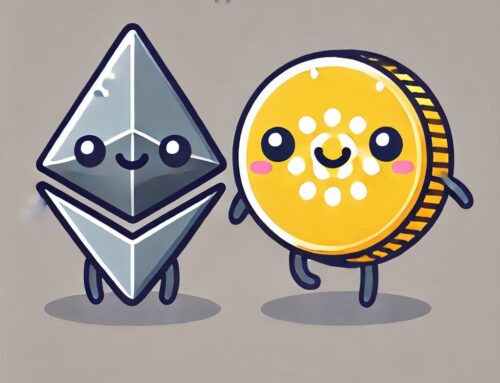A Journey into the Cardano Computation Layer (Where Smart Contracts Come to Life!)
Alright, fellow blockchain explorers, let’s venture deeper into the intriguing world of Cardano and explore one of its most vital components: the Cardano Computation Layer (CCL)! No, it’s not a secret government agency, but rather the engine that drives all the smart contract magic on the Cardano network.
We have talked about the foundational components of Cardano and now it is time to take a look at how the network can be utilized. The Cardano Computation Layer is where the power of decentralized applications comes to life. Think of it like the brain of a sophisticated robot, where all the complex calculations, automated decisions, and self-executing agreements come to fruition. So, let’s strap on our virtual reality headsets and dive into the exciting realm of the Cardano Computation Layer!
The Layered Cake: Why Does Cardano Need a Computation Layer, Anyway? (It’s All About Division of Labor!)
Before we plunge headfirst into the depths of the Cardano Computation Layer, let’s take a moment to appreciate the overall design philosophy that makes it so effective: Cardano’s layered architecture. It’s not just some arbitrary design choice; it’s a strategic decision that brings a multitude of benefits to the network, and allows it to run much more effectively. Instead of cramming all functionalities into one monolithic layer, Cardano cleverly divides responsibilities between different layers, which allows each layer to have greater specialization.
Separation of Concerns (Like Organizing Your Room!): By separating the settlement of transactions from the execution of smart contracts, Cardano achieves a more modular and efficient design. It’s like having specialized teams working on different parts of a complex project, allowing for more focused development, and increased efficiency.
Enhanced Scalability (Making Room for More Smart Contracts!): By keeping the Cardano Computation Layer separate from the settlement layer, the network can scale much more effectively, and all parts of the system aren’t negatively impacted when some features are being used more than others. This separation prevents bottlenecks and ensures that the network can handle a growing number of smart contracts, and transactions.
Greater Flexibility (Adapting to New Challenges!): A layered architecture makes Cardano more flexible, allowing it to adapt to new technologies and requirements. It’s like building with Lego blocks, where you can easily add or remove components without disrupting the entire structure, and allows for future innovation.
The Cardano Computation Layer (CCL): Where Smart Contracts Take Center Stage (It’s Where the Magic Happens!)
The Cardano Computation Layer (CCL) is the second layer in Cardano’s layered architecture, and the place where the most complex processes are handled. While the Settlement Layer (CSL) handles the basic infrastructure and asset transfers, the Cardano Computation Layer is where all the smart contract magic happens, and the decentralized applications of the Cardano ecosystem are brought to life. Think of it like the engine control unit (ECU) of a car; all the magic is being calculated in the background, in order to allow the engine to run smoothly.
Smart Contract Execution (The Heart of the Action!): The Cardano Computation Layer is responsible for executing smart contracts, which are self-executing agreements written in code. These contracts automate various processes, enabling the development of decentralized applications (dApps) that can revolutionize how different systems function. It’s like having a tiny digital lawyer that ensures everyone follows the rules, without the need for human intervention.
Complex Logic (Handling the Intricate Stuff!): The Cardano Computation Layer is designed to handle complex logic and computational tasks, making it a versatile platform for building a wide range of decentralized applications. It’s like the brain of the Cardano network, handling all the calculations and operations behind the scenes.
Plutus Power (The Secret Weapon!): The Cardano Computation Layer utilizes the Plutus platform, which is a set of tools and programming languages specifically designed for building smart contracts on Cardano, while also minimizing vulnerabilities. It’s like having a custom-built toolbox, specifically tailored to the unique needs of developers on the Cardano network.
How the Cardano Computation Layer Handles Smart Contracts (From Code to Execution!)
Smart contracts are at the heart of the Cardano Computation Layer, and here’s how this layer handles them:
Smart Contract Creation (Writing the Rules!): Developers write smart contracts using languages like Plutus and deploy them on the Cardano Computation Layer. It’s like writing a set of rules for the digital world and having them ready to be enforced.
Transaction Trigger (Let the Show Begin!): A transaction on the Settlement Layer (CSL) can trigger the execution of a smart contract on the Cardano Computation Layer. It’s like pressing the start button on a complex machine, initiating a series of automated actions.
Smart Contract Execution (Following the Script!): Once triggered, the smart contract is executed by the nodes on the Cardano Computation Layer, carefully following the instructions outlined in the contract’s code. It’s like a robot following a set of pre-programmed instructions, performing each step with precision.
State Changes (Updating the Records!): The smart contract can change the state of the blockchain by creating new transactions on the Settlement Layer, which will then be recorded and finalized. It’s like having a contract that automatically updates all the records, reflecting any changes that have been agreed to.
Interaction Between the Cardano Computation Layer and CSL: A Match Made in Blockchain Heaven
The Cardano Computation Layer and the Cardano Settlement Layer don’t operate in isolation; they interact closely to create a powerful and versatile platform. Here’s how they work together:
Triggers and Actions (A Seamless Workflow!): The Cardano Computation Layer can be triggered by transactions on the Settlement Layer, and the results of smart contract executions on the Cardano Computation Layer can create new transactions on the Settlement Layer. It’s like having a two-way communication system between the legal department and the treasury, where each department relies on the other to function properly.
Secure Foundation (Building on Solid Ground!): The Settlement Layer provides the secure and reliable infrastructure for the Cardano Computation Layer to operate on. It ensures the integrity of the transactions that trigger the smart contracts, while the Cardano Computation Layer ensures the proper execution of these contracts.
Seamless Operation (Like a Well-Oiled Machine!): This interaction between the layers enables seamless operation of the entire Cardano network, combining the basic functionality of the Settlement Layer with the advanced capabilities of the Cardano Computation Layer, in order to support complex transactions, and make the network efficient.
Key Features of the Cardano Computation Layer: (The List of Awesome!)
Smart Contract Execution: The Cardano Computation Layer is primarily responsible for executing smart contracts and supporting dApp development, which are the key drivers of the network.
Plutus Platform: It utilizes the Plutus platform, which provides tools and programming languages for developing secure and reliable smart contracts, making the platform accessible to developers of all skill levels.
Interoperability: The Cardano Computation Layer can interact with other blockchains, allowing for the development of cross-chain applications, that can use the advantages of multiple systems.
Versatility: The Cardano Computation Layer provides a versatile platform for building a wide range of decentralized applications, from decentralized finance to supply chain management and digital identity solutions, which allows it to be used in many different ways.
The Takeaway: The Future is Smart, and It Runs on the Cardano Computation Layer!
The Cardano Computation Layer (CCL) is the heart of the smart contract functionality on Cardano, enabling the development of decentralized applications and automating various processes. By separating the computation layer from the settlement layer, Cardano achieves both scalability and efficiency. The Cardano Computation Layer, with its Plutus platform and smart contract capabilities, provides a versatile platform for building a wide range of innovative solutions. It’s not just about simple transactions; it’s about building complex applications that have the power to revolutionize many different industries.





